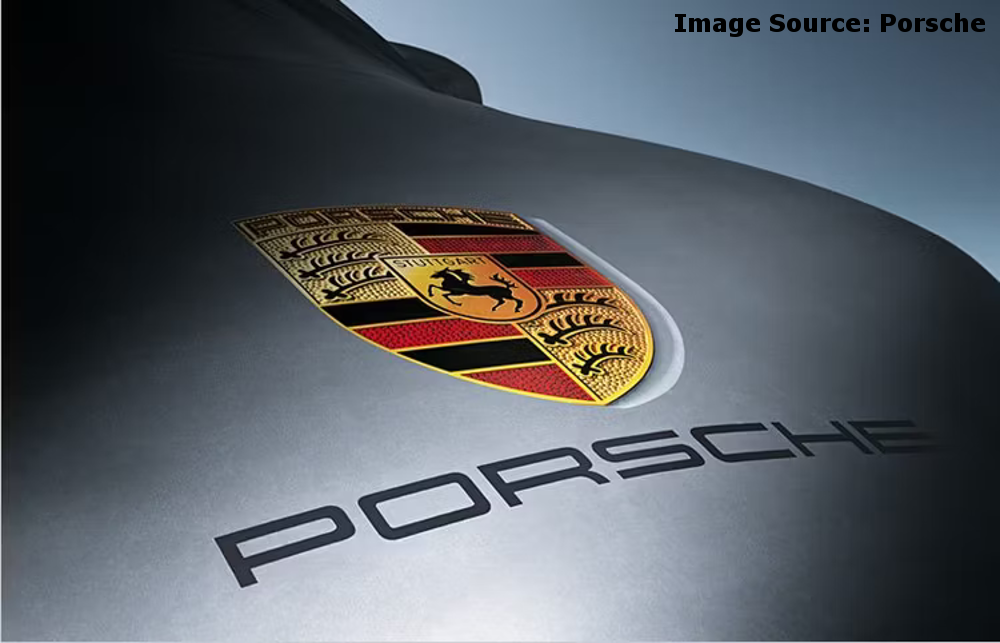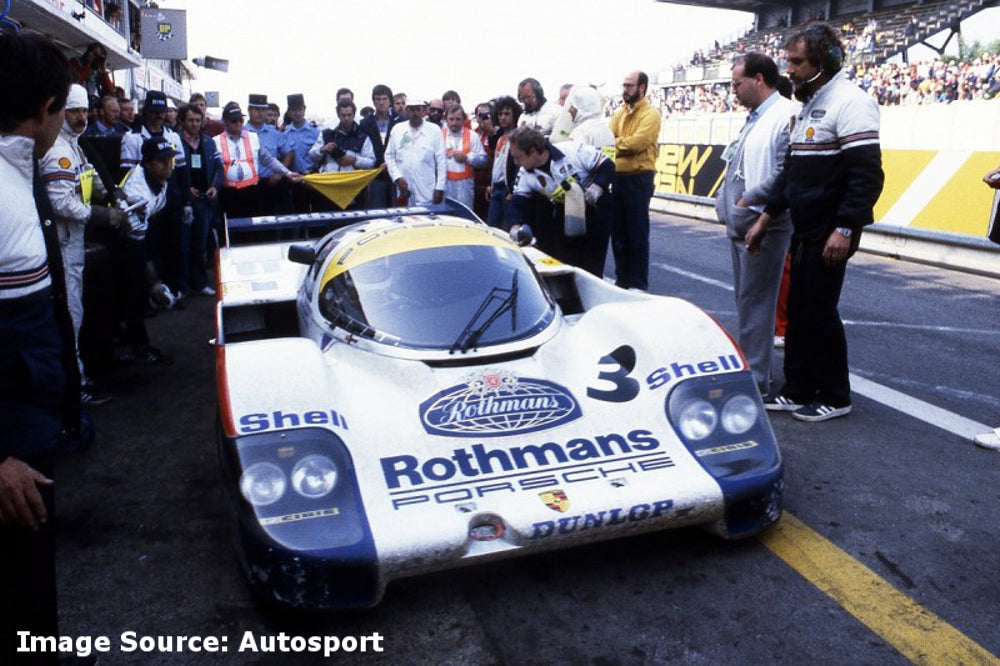A company’s logo represents the entire embodiment of the brand and its history. It illustrates the brand’s roots whilst eluding to the quality and dynamics of its products. A strong logo resonates with people, creating an awareness and affinity for the brand. Some car brands have emblems that are simple, a letterform or a shape, while others are more complicated in form.
Whilst the logo or badge found at the front and rear of most cars through the ages have played a vital role in manufacturer branding and reputation, some badges also convey the history of the brand, none more so, than the Porsche crested badge that has adorned every one of its fabled cars since 1952.

With Ferry Porsche, the son of founder Ferdinand Porsche, believed to have enjoyed drawing coats of arms it was probably inevitable that the Porsche logo would tell a story as evocative as the cars it graces. Not only is the Porsche logo a feat of elegant design but it has endured as one of the most famous trademarks in the world.
In this article, we will take a look at the storied Porsche badge and the meaning of the various elements that come together to form the highly respected emblem. This Porsche crest has remained unchanged on race and road-going cars for more than seventy years.
Porsche Gets A Badge Befitting Its Status

The first Porsche 356 that rolled off the production line in Zufenhausen in 1948, already came with branding, but not the crest we know today, instead, the name “Porsche” was emblazoned across the hood. It should be noted that there is an ongoing debate about the first Porsche. Some historians believe it to be the Type 64, of which Ferdinand built three for the 1939 Berlin to Rome race. The official stance however is that the 356/1 was the first car built by Porsche.

Interestingly, at the unveiling of the 356 on a racetrack in Innsbruck, Porsche had the Type 64 follow along as the chase car, complete with hastily applied “Porsche” lettering on the hood.
Almost as controversial as the debate around the first Porsche is the credit for the design of the Porsche badge. Some observers claim that Ferdinand Porsche’s son, Ferry, drew the logo on a napkin during a meal with Max Hoffman, the American Porsche distributor, while others claim that Franz Xaver Reimspieß designed the badge. The latter version is widely accepted as the most likely.
Porsche officially kicked off the search for a suitable logo in March of 1951 with an art competition carrying a cash prize. Although the company hoped to use the winning entry’s submission for the Porsche logo, none of the designs were deemed suitable by Porsche management. As a result, towards the end of the year, Porsche began working internally on a logo.
This led to Franz Xaver Reimspieß becoming involved with the design of the Porsche logo in 1952. He was the same designer Volkswagen commissioned to design that company’s logo in 1936. The design was registered with the German Patent Office and made its debut on the steering wheel horn button of the 356 towards the end of 1952.
From these humble beginnings, Porsche began displaying the motif more prominently, starting with the Porsche 356 Roadster in 1954 which featured the crest on the vehicle’s characteristic bonnet handle. Thereafter, in 1959 Zuffenhausen’s sports cars also had their hubcaps adorned with the logo, with every Porsche vehicle built thereafter proudly displaying the crest on the hood. Along with the silhouette of the iconic Porsche 911, the crest logo has now become one of the most recognizable automotive artifacts in the world.
Even though the Porsche logo was officially registered in 1952 the story behind the logo starts even before the company was officially formed.
The Proud Porsche Logo Has A Story To Tell

Because the brand was established in Stuttgart, situated in the state of Württemberg, Porsche drew heavily from the elements of the crest of Württemberg as well as the city’s coat of arms when creating its official emblem.
The Porsche logo was based on the Free People’s State of Württemberg’s coat of arms, which is why it comes in the shape of a crest, to pay homage to the traditions of the region. At the time the coat of arms for Württemberg was a large crest shield, flanked on either side by a deer. The central shield, referred to in heraldry as an escutcheon, features the same striped red and black elements that appear in Porsche logos today.
The escutcheon is further separated into four sections, with the iconic Porsche wordmark printed at the top of the crest in a custom all-capital font designed specifically for the Porsche brand. The series of three antlers and the red and black colored bars, arranged in the four segments around the Porsche logo, was also taken from the crest of Württemberg to symbolize the company’s ties to the region.
One of the most common questions asked about the Porsche crest is, “What is the animal on the Porsche logo?”
With Porsche’s manufacturing headquarters located in Stuttgart the city’s coat of arms, consisting of a black prancing horse superimposed on a yellow shield, is included as an inescutcheon, (in heraldic terms, a small shield within a larger shield). The word “Stuttgart” is inscribed above the horse in the same golden type as that used for Porsche. For the logo, Porsche substituted the yellow background of the shield with gold coloring.
Aside from the unique imagery of the deer and the horse presented by the Porsche logo, the colors of the emblem are some of the most memorable elements of the badge. While all of the colors are linked back to the colors of the region where Porsche was originally created, they also have their own meaning.
Red is often associated with power and passion, while black symbolizes strength and innovation. Gold, of course, is excellent for conveying luxury and wealth.
So, whilst Porsche has racked up many awards for its high-performing engines and luxurious features over the years, the coveted badge remains constant and unchanged, linking the past traditions of the classic German company to the future success of the brand.
Did you enjoy this article? Avoid missing future publications by subscribing to this blog's RSS feed using
https://frazerpart.com/blogs/porsche-history.atom







1 comment
Efwards
Excellent reading, thank you.
look forward to more.
Excellent reading, thank you.
look forward to more.